Carbon 3 Ways
Carbon is found in many different compounds. It is in the food you eat, the clothes you wear, the cosmetics you use and the gasoline that fuels your car. In addition, carbon is a very special element because it plays a dominant role in the chemistry of life.
The element carbon
Carbon has four electrons in its valence shell (outershell). Since this energy shell can hold eight electrons, each carbon atom can share electrons with up to four different atoms. Carbon can combine with other elements as well as with itself. This allows carbon to form many different compounds of varying size and shape.
Carbon alone forms the familiar substances graphite and diamond. Both are made only of carbon atoms. Graphite is very soft and slippery. Diamond is the hardest substance known to man. If both are made only of carbon what gives them different properties? The answer lies in the way the carbon atoms form bonds with each other.
Graphite Molecular Structure
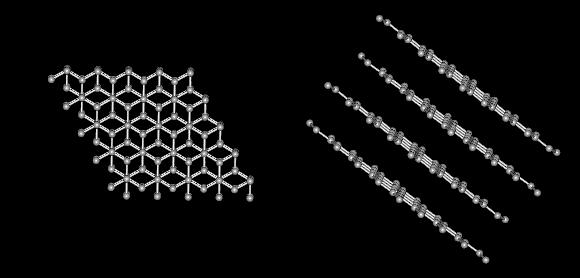
-------------->spin on -------->- spin off
------>space fill/cpk -------->stick ----> ball-and-stick
There are strong covalent bonds between carbon atoms in each layer. But, only weak forces exist between layers. This allows layers of carbon to slide overeach other in graphite.
Diamond Molecular Structure
On the other hand, in diamond each carbon atom is the same distance to each of its neighboring carbon atoms. In this rigid network atoms cannot move. This explains why diamonds are so hard and have such a high melting point.
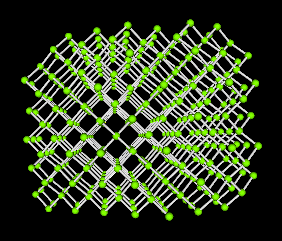
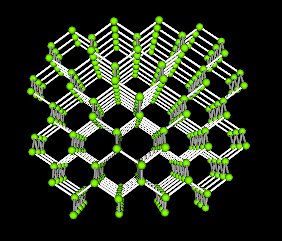
-------------->spin on -------->- spin off
------>space fill/cpk -------->stick ----> ball-and-stick
The 3-D coordinates for graphite and diamond are available in the MathMol Structural Database. We urge you to download these structures to your home computer and use one of the suggested 3-D viewers.
The Molecule of the Month Page has recently included information on diamond located here
Amorphous Carbon
A third class of carbon compounds are called Amorphous Carbon
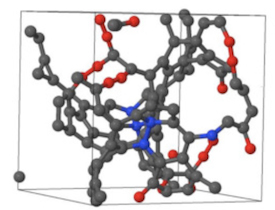
Image from: Amorphous carbon at low densities: An ab initio study
Amorphous carbon is free, reactive carbon that has no crystalline structure. Amorphous carbon materials may be stabilized by terminating dangling-π bonds with hydrogen. As with other amorphous solids, some short-range order can be observed. Charcoal and coal are examples of an amorphous carbon.
A new class of carbon compoundswas discovered after their accidental synthesis in 1985 . They are called fullerenes. The figure shown on the left is one form composed of 60 carbons. Notice the geometric patterns of pentagons and hexagons that form the familiar icosohedron.
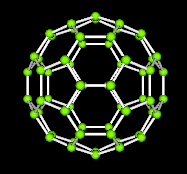
-------------->spin on -------->- spin off
------>space fill/cpk -------->stick ----> ball-and-stick
For a new way carbon can form see : What is the structure of the Carbyne molecule?
MATHMOL TEXTBOOK V 3
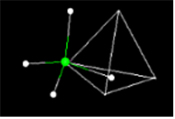
Table of Contents
- Introductory Comments
- What is Molecular Modeling?
- Why is Molecular Modeling Important?
- What do Some Common Molecules Look Like?
- Where's the Math in MathMol?
- Carbon 3 Ways
- How to View Molecular Structures in Class or at Home
- MathMol Library of Structures
Interactive Activities
- Activity 1: Measuring length and distance at the molecular level
- Activity 2: Geometry-of-1-Dimension
- Activity 3: Geometry of 2- Dimensions
- Activity 4: Geometry of 3-Dimensions
- Activity 5: Introduction to Molecular Modeling using Jsmol
- Activity 6: The Geometry of Crystals
- Activity 7: Summary Sheet by Students
- Activity 8: What is the Geometry of the Methane Molecule
- Activity 9: Geometry of the Crystal Structure of Ice
- Activity10:Geometry of the Benzene Molecule
Appendix
Interactive Activities